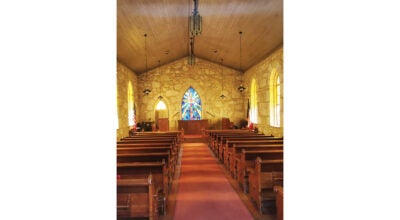Don’t take chance in wreck; wear seat belts
Published 5:00 am Friday, June 7, 2002
Let me warn you before you read any further — I’m on a soapboxtoday.
I would have been here sooner, but I haven’t felt like climbingup on anything since May 17. That’s when my car crossed paths withtwo pickup trucks at an intersection in Grenada.
Instead of attending a high school graduation, my mother, mysister, my nephew and I all ended up in the emergency room atGrenada Lake Medical Center, along with the other two drivers.
Mom spent a few days in the hospital for observation. One of theother drivers is still hospitalized. Although battered and bruised,the rest of us were sent home. We’re still recovering.
The Laster family counts its blessings every day. We know ourinjuries would have much more serious had we not been wearing seatbelts.
Buckle up, and make sure your passengers wear their seat belts,too.
Don’t think it’s a good idea? Well, I’ll let the expertsexplain:
According to the National Highway Traffic Safety Administration,to understand the value of safety belt use, one must firstunderstand some of the dynamics of a crash. Every motor vehiclecrash is actually comprised of three collisions:
The Car’s Collision, which causes the car to buckle and bend asit hits something and comes to an abrupt stop. This occurs inapproximately one-tenth of a second.
The Human Collision, which occurs as the car’s occupants hitsome part of the vehicle. At the moment of impact, unbeltedoccupants are still traveling at the vehicle’s original speed. Justafter the vehicle comes to a complete stop, these unbeltedoccupants will slam into the steering wheel, the windshield, orsome other part of the vehicle interior. Or, they could be ejectedfrom the car.
Another form of human collision is person-to-person impact, whenunbelted occupants slam into each other.
The Internal Collision: Even after the car’s occupant’s bodycomes to a complete stop, the internal organs are still movingforward. Suddenly, these organs hit other organs or the skeletalsystem. This internal collision often causes serious or fatalinjuries.
That’s why seat belts are important.
During a crash, properly fastened safety belts distribute theforces of rapid deceleration over larger and stronger parts of theperson’s body, such as the chest, hips and shoulders. The safetybelt stretches slightly to slow the body down and to increase itsstopping distance. Simply, the seat belt holds you in your seat,allowing you to stop as the car stops.
Other than some minor cuts, the injuries my relatives and Ireceived were probably caused by the seat belts doing what theywere supposed to do. I’ll take bruises and sore muscles over headinjuries, internal injuries or broken bones.
According to the NHTSA, the difference between a belted person’sstopping distance and an unbelted person’s stopping distance issignificant, and quite often, the difference between life anddeath.
There’s more:
* Seat belts save over 10,000 lives in America every year,according to the NHTSA. In 1999 (latest figures available), ifevery front seat occupant had buckled up, an additional 9,553deaths could have been prevented.
* In 1999, 63 percent of youth (age 15-20) who died in passengervehicle crashes were not wearing safety belts.
Some see the decision not to wear a seat belt as a personalchoice. It is. So is getting drunk and getting behind the wheel ofa car, and both can kill you.
Buckle up. It could save your life. I’m convinced seat beltsprevented what could have been an unspeakable tragedy for myfamily.
Write to Nanette Laster at P.O. Box 551, Brookhaven, Miss.39602, or send e-mail to news@dailyleader.com.





